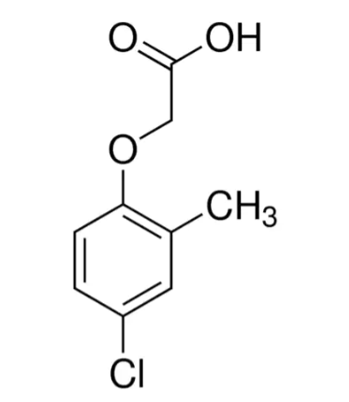Molecular Database
MCPA
MW = 200.62 g/mol
CAS Number: 94-74-6
Use and production
MCPA (2-methyl-4-chlorophenoxyacetic acid) is used as an herbicide, generally as its salt or esterified forms. Used thus, it controls broadleaf weeds, including thistle and dock, in cereal crops and pasture. It is selective for plants with broad leaves, and this includes most deciduous trees. Clovers are tolerant at moderate application levels. It is currently classified as a restricted use pesticide in the United States.
Toxicity
Wide usage of MCPA as an herbicide raises concern of environmental risks, so considerable research has been done in recent decades to evaluate the environmental risk of MCPA. MCPA can be moderately toxic to mammal and aquatic organisms, and relatively less toxic to birds. MCP (4-chloro-2-methylphenol) is the intermediate in the synthesis of phenoxy herbicides, and is also the metabolite of MCPA degradation. MCP is considered very toxic to aquatic organisms.



